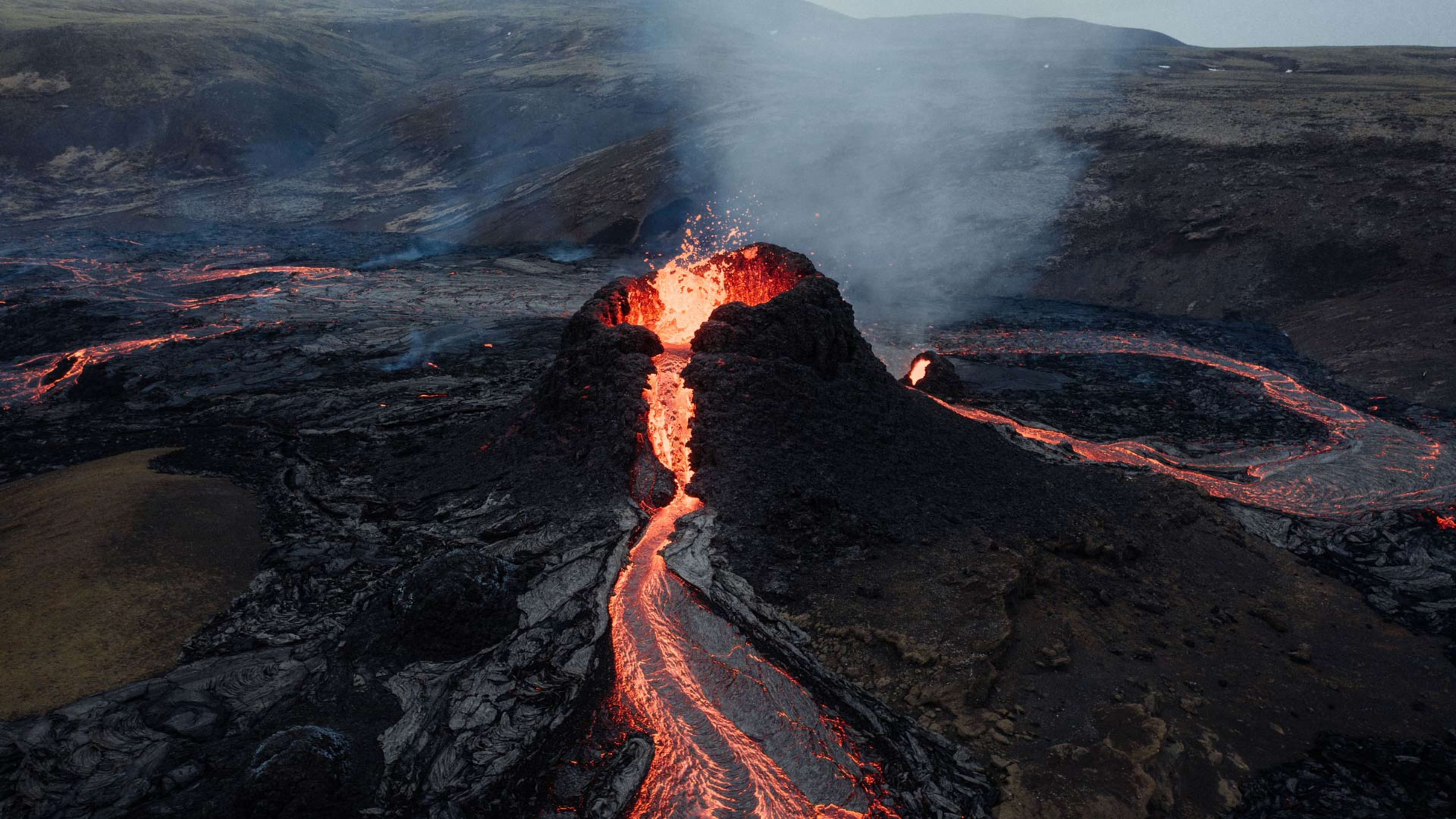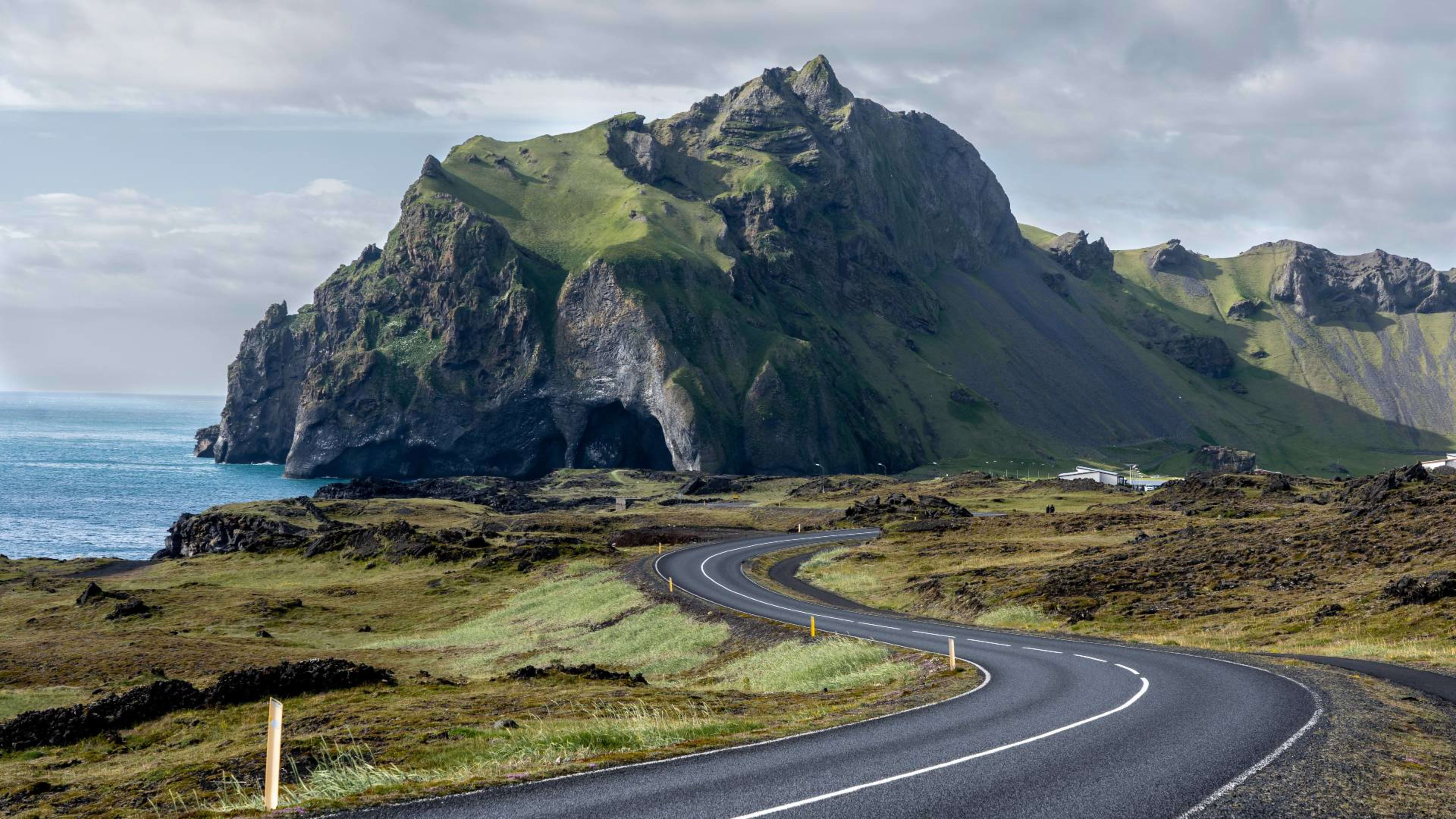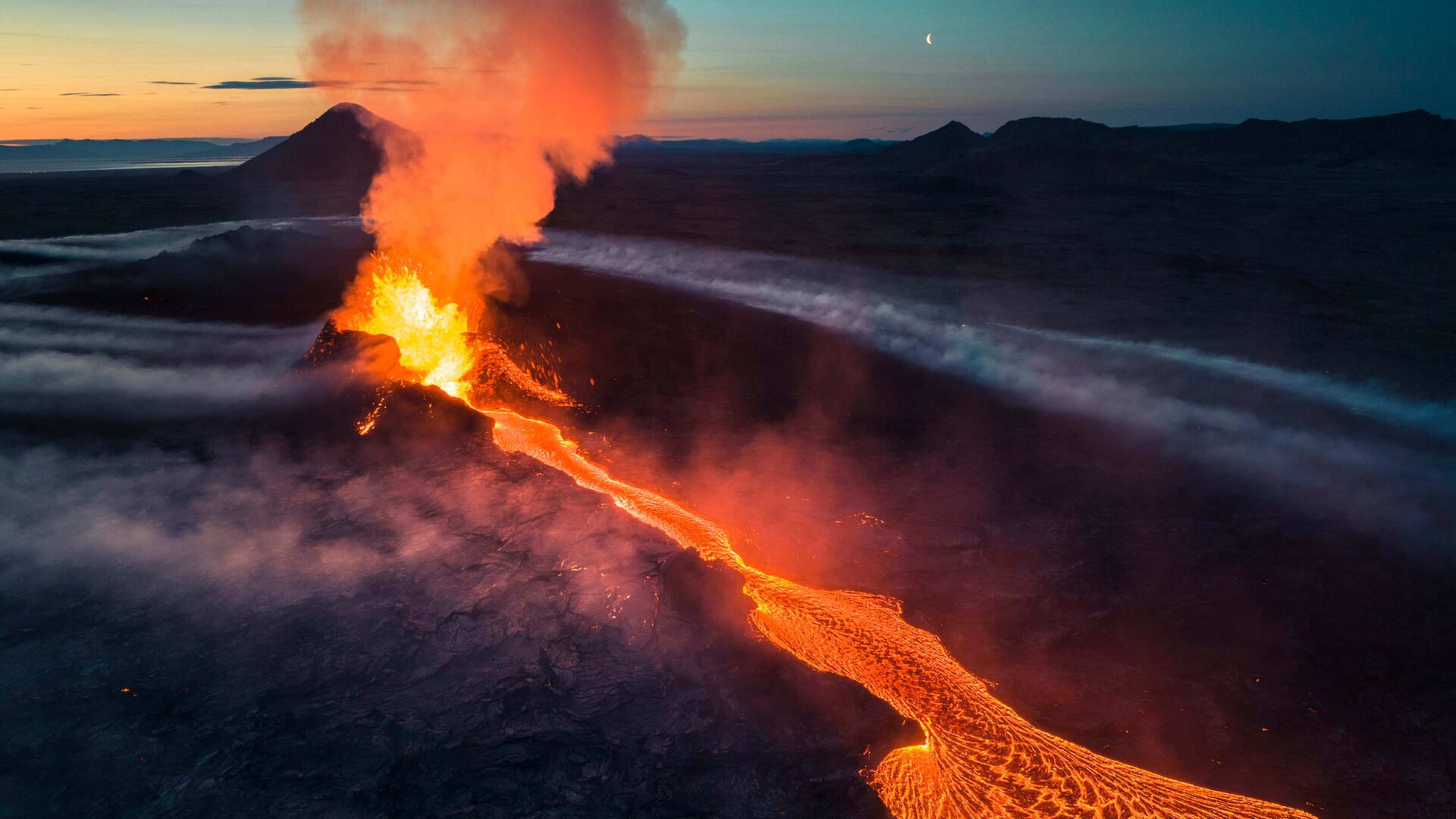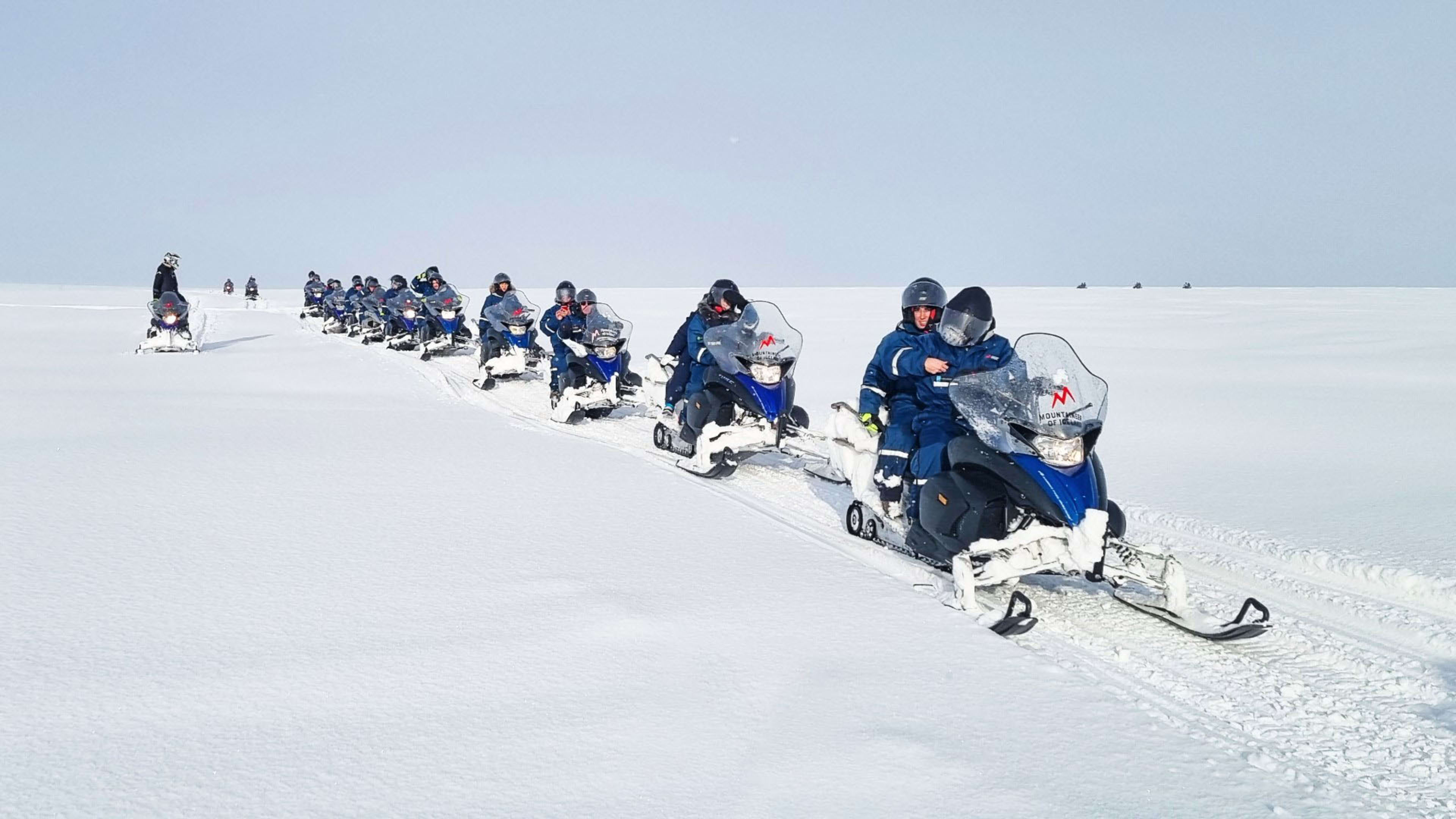Since 2021, a series of volcanic eruptions on the Reykjanes peninsula has rekindled Iceland’s fiery reputation. If you’re intrigued by these volcanic events, you’re in the right place. Come and learn everything you need to know about Fagradalsfjall, a hot attraction on the island.
These eruptions have shown perfectly why Iceland is nicknamed the Land of Fire and Ice. The fiery lava fountains demonstrated the true power of nature.
But Fagradalsfjall isn’t the same type of volcano as Eyjafjallajökull, which erupted in 2010 and caused a lot more chaos. The newest volcano didn’t disrupt air travel in Iceland or the rest of Europe.
If you want to know more about Fagradalsfjall, continue reading. You’ll find out all about the eruptions of the past few years on the Reykjanes peninsula. What’s more, you’ll also discover other top volcanic attractions in Iceland.
- Learn about the latest eruptions and events on our volcanic activity page.
- Get inspired by these Iceland volcano tours & start planning your volcanic adventure.
When did the Fagradalsfjall volcano erupt?
The first eruption in over 800 years started in March 2021 at Geldingadalur valley in Fagradalsfjall. Since then, there have been eruptions every year in the same region, but with different fissures.

Where is Fagradalsfjall?
You’ll find Fagradalsfjall on Iceland’s Reykjanes peninsula. This region lies south of the capital, Reykjavík, and is home to Keflavik International Airport and the famous Blue Lagoon. Its location means it is more accessible than other volcanic sites.
Over the last few years, the previous eruption sites became a must-see attraction in Iceland after they were declared safe to visit by Icelandic authorities. Locals and visitors from around the world came to see the freshly-formed lava fields up close.
- Stay in Reykjavík and explore nearby attractions on an Iceland multi-day tour.
- Related: Where to see active volcanoes in Iceland: Your guide.
Before Fagradalsfjall, the last famous eruption in Iceland was Eyjafjallajökull in 2010. That volcano caused air travel disruption all over Europe, due to large ash clouds. But luckily the most recent ones in Reykjanes were of a different nature.
The type of eruptions at Fagradalsfjall have been fissures. Instead of rock and ash clouds, they started as a crack in the Earth’s crust. This provided a way for magma to slowly seep out from the deep pockets located under Iceland – also known as the ‘Iceland plume’ or ‘hotspot’.
These fissures and their spurting lava created one larger crater, which the lava flowed from in molten rivers.
- Discover Eyjafjallajökull and other natural wonders on a self-drive tour of Iceland.

Iceland is located along the Mid-Atlantic Ridge tectonic plate boundary, where the North American and Eurasian plates meet. Fissures and volcanic activity are caused by the slow pulling apart of the 2 tectonic plates.
These eruptions give an insight into the active geology and volcanoes of Iceland. They’re not only responsible for one of the latest attractions in the country, but also for spouting geysers, warming hot springs, and all the geothermal energy Icelanders use.
Some scientists have said that this is a reawakening of the Reykjanes region, where there have been no eruptions in 800 to 900 years. We might be seeing the beginning of a new period of eruptions dotted across the country.

Is it safe to visit the Reykjanes volcano site?
Please follow the safety advice of local authorities. This means staying away from the eruption area while it’s closed and respecting road closures. For the latest updates and safety information, visit the Safe Travel Iceland website.
- Get more useful health & safety tips in the Travel Guide.
Other highlights of the Reykjanes peninsula
If you want to witness Iceland’s volcanic forces at play, then you won’t want to miss a visit to the Reykjanes peninsula. Dive into the culture and landscape of Iceland’s southwestern tip.
You could stop by the Blue Lagoon geothermal spa and the 100-year-old Reykjanes Lighthouse. Crossing the Bridge Between Continents is another way to see the Mid-Atlantic Ridge up close.
- Check out these summer tours to Iceland for more inspo.
- Related: Your guide to visiting Iceland in summer.
Other volcanic attractions in Iceland
Needless to say that the Land of Fire and Ice has plenty of volcanic highlights to enjoy.
You could admire the moss-covered lava fields and volcanoes dotted around the island, forming a truly incredible landscape. But where should you go exactly? We’ve put together a list of the top volcanic areas and locations you could visit:
1. Þingvellir National Park
We’ve already talked about the Mid-Atlantic Ridge. Another place to see this tear in the Earth’s crust is Þingvellir National Park. This is a cultural and geological wonder of Iceland and the world.
Here, you can see the effects of the tectonic plate movements on the Icelandic landscape. Þingvellir is also a UNESCO World Heritage Site because of its cultural significance. This is where the first parliament of Iceland, the Alþingi, was founded in the 10th century.
- See Þingvellir and other natural attractions on a Golden Circle tour of Iceland.

2. Vík í Mýrdal
Travel along the south coast and see the infamous Eyjafjallajökull volcano, as well as the ice caps of the region. It’s a sight you won’t want to miss!
Then you’ll want to stop by the quaint village of Vík í Mýrdal to take a walk on the nearby Reynisfjara black sand beach.
This iconic stretch of coastline is just one of the country's many black sand beaches. They're formed when volcanic rock is eroded by rivers and carried out to sea. Here, the black sand and pebbles are deposited on the shoreline.
- Benefit from the expert knowledge of a local guide on a private tour of Iceland.

3. Laki craters
Further east you'll find Laki, or Lakagígar. Created during an eruption in 1783, this 25 km (15.5 mi) long volcanic system is made up of a string of craters and fissures. At the same time, you can visit the breathtaking surroundings, as it’s part of the Vatnajökull National Park.
4. Volcanic craters in North Iceland
If you’re touring the Ring Road, you’ll want to check out the large craters and calderas of the otherworldly Lake Mývatn area. This region is renowned for its unusual terrain and geothermal activity.
Top of your list should be the vast volcanic system of Krafla, with a diameter of 10 km (6 mi). You could also visit the nearby Hverfell volcanic crater, one of the biggest tephra craters in Europe.
- Complete Iceland's famous Route 1 on a Ring Road tour.
- Related: Driving Iceland’s Ring Road – Ultimate guide.
5. Westman Islands
Journey to Heimaey, a volcanic island that’s part of the Westman Islands archipelago. It’s located just off the south coast and has a rich cultural and seismic history. Come witness the lava fields that engulfed some of the houses on the island during the 1973 eruption.
Hike to the top of Mount Eldfell, discover the stunning elephant rock formation, and sail around the islands. You might even catch sight of whales, seals, and puffins.

6. Þríhnúkagígur volcano
The ultimate excursion has to be going deep inside a volcano, right? Well, you can do this at Þríhnúkagígur, a dormant volcano.
After a moderate hike to reach the crater, you’ll descend 120 m (400 ft) to the bottom of an ancient magma chamber via a cable lift. This way you can truly enjoy an insider look of what lies beneath the surface.
Walking up Þríhnúkagígur is a big part of the experience as you’ll be rewarded by stunning scenery all around.
- See the day tours and activities you could add to your itinerary with Iceland Tours.

Bonus: Perlan
This is one of Reykjavík’s top attractions. Perlan allows you to experience Iceland’s natural wonders – volcanoes included – from the comfort of a museum.
Here you could walk through the city’s first ice cave, a detailed replica of the inside of a glacier. Then, learn about the power and beauty of volcanoes. And witness the famous Northern Lights at Iceland’s only planetarium.
- Visit between October and April on an Iceland winter tour or Northern Lights travel package.
- Related: Your guide to visiting Iceland in winter.
Planning your Iceland volcano vacation
There are many ways to explore Iceland and its volcanic attractions. You could opt for a road trip, city break, camping adventure, or private tour.

Why not let a local organize the adventure for you? Book with Iceland Tours and you’ll benefit from itineraries made with our travel team’s insider knowledge. You can expect tried-and-tested routes and accommodations, trusted suppliers, and plenty of advice.
They’ll suggest volcanic excursions to add to your tour while you explore Iceland at your own pace. You’ll also have access to our 24/7 helpline while you’re here.
When you’re ready to plan your volcanic adventure, check out our Iceland vacation packages.



